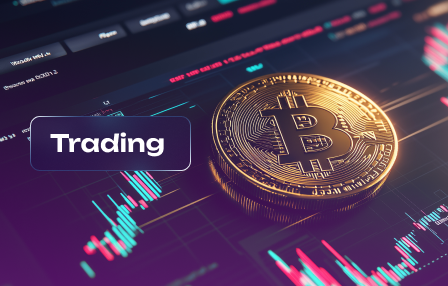The Role of OTC Desks in the Global Crypto Market
March 16, 2025
To enhance transaction efficiency, consider leveraging alternative trading methods that facilitate significant liquidity. These approaches allow participants to execute large trades without causing substantial market fluctuations, ensuring a smoother trading experience.
In recent years, the presence of specialized platforms has transformed how assets are exchanged. By providing tailored solutions for high-volume transactions, these venues have become essential for traders looking to optimize their strategies while minimizing slippage.
The integration of these platforms into financial ecosystems fosters a more dynamic environment, attracting a diverse range of participants. This evolution not only improves liquidity but also encourages competitive pricing across various trading avenues, ultimately benefiting all who engage in this vibrant marketplace.
Understanding OTC Desk Operations
To optimize trading strategies, market participants must grasp how these platforms operate. Here are key aspects to consider:
- Liquidity Provision: These services facilitate significant transactions without causing drastic price fluctuations. This feature attracts institutional players seeking to execute large orders discreetly.
- Customized Services: Tailored solutions cater to individual needs, including pricing structures and settlement processes, ensuring a seamless experience for clients.
- Counterparty Risk Management: By assessing creditworthiness and maintaining relationships with reliable buyers and sellers, they mitigate risks associated with high-value trades.
- Market Intelligence: Access to in-depth analytics and insights allows participants to make informed decisions based on prevailing trends and price movements.
- Transaction Anonymity: Maintaining privacy is crucial for many traders. These platforms provide the confidentiality needed for executing substantial deals without attracting attention.
Awareness of these operational elements can significantly enhance strategic planning for those involved in trading activities. Understanding the mechanisms of these entities can lead to better execution and risk management practices.
Price Formation Mechanisms Explained
To grasp how valuations are established in this sector, focus on the interplay between supply and demand. In transactions involving large volumes, the balance shifts based on participant activity, leading to significant price adjustments. Understanding this balance is crucial for anyone involved.
Liquidity plays a critical role. High liquidity often results from concentrated buying or selling activities, which can either stabilize prices or create volatility. Analyze transaction volumes to predict possible price fluctuations. A spike in trades typically signals heightened interest, prompting reconsideration of asset value.
Market participants include retail investors, institutional players, and trading platforms. Each has unique strategies influencing price outcomes. Retail traders often react to news or trends, while institutions may employ algorithmic trading, impacting valuations through automated transactions. Identify these behaviors to anticipate market shifts.
Another factor is the spread between buy and sell orders. A narrower spread usually indicates robust liquidity and confidence among traders. Conversely, an expanding spread can suggest uncertainty or reduced interest in specific assets. Monitor these spreads closely to gauge sentiment and potential price movements.
Arbitrage opportunities also influence pricing mechanisms. Traders exploit price discrepancies across different exchanges or regions, contributing to price alignment globally. Recognizing these opportunities can provide tactical advantages for maximizing returns.
Lastly, external factors such as regulatory changes or macroeconomic indicators can sway participant sentiment, subsequently affecting pricing structures. Stay informed about global developments that might disrupt established trends or introduce new dynamics into valuation processes.
Liquidity Trends in Crypto Markets
Focus on enhancing liquidity by engaging with diverse trading platforms and fostering relationships with key participants. Increased transaction volume directly correlates with reduced price volatility, making it crucial to streamline processes for smoother trades.
Analyze transaction flows across various exchanges to identify patterns. High trading activity often indicates healthy liquidity. Utilize analytics tools to monitor these trends and adapt strategies accordingly.
Consider integrating algorithmic trading solutions to optimize execution speed and minimize slippage during large transactions. This approach allows market players to capitalize on price discrepancies across different venues quickly.
Stay informed on regulatory developments influencing liquidity. Compliance measures may alter participant behavior, impacting overall volume. Regularly assess how changes affect trading dynamics.
Form partnerships with liquidity providers to enhance access to better rates and deeper order books. Collaborating with these entities can significantly improve execution quality in transactions.
Track the flow of capital between regions. Emerging markets often exhibit differing liquidity profiles compared to established economies, providing opportunities for arbitrage and strategic positioning.
Leverage social media sentiment analysis to gauge market perception and anticipate shifts in participant engagement. Understanding community sentiment can offer insights into potential liquidity fluctuations before they manifest in trade volumes.
Lastly, prioritize transparency in operations. Clear communication regarding transaction policies builds trust among participants, encouraging higher volumes and more robust trading relationships.
Regulatory Challenges for OTC Trading
Participants must prioritize compliance with evolving regulations to navigate the complexities of trading in alternative channels. Different jurisdictions impose varying requirements, impacting how transactions are executed and reported. Adhering to Anti-Money Laundering (AML) and Know Your Customer (KYC) protocols is non-negotiable. Failure to implement these practices can result in significant penalties and reputational damage.
With heightened scrutiny from governmental bodies, firms engaging in large-scale transactions need to maintain transparency in their operations. Regular audits and thorough documentation processes are necessary to demonstrate adherence to legal frameworks. Establishing relationships with regulators can also facilitate smoother operations and foster trust within the trading ecosystem.
The challenge of tax compliance cannot be overlooked. Different countries have distinct regulations regarding taxation on cryptocurrency profits, which may lead to discrepancies in reporting and increase the risk of audits. Participants should consult with tax professionals to ensure accurate reporting and compliance.
Cross-border trading introduces additional hurdles due to differing regulatory environments. This complexity necessitates a robust strategy for managing risks associated with currency fluctuations and regulatory changes. Engaging legal experts who understand international laws can mitigate potential pitfalls.
In this environment, collaboration among market participants becomes essential. Sharing insights and best practices can enhance collective understanding of regulatory expectations while promoting a compliant culture. Leveraging technology for real-time monitoring of transactions and ensuring adherence to evolving guidelines can streamline operations.
Ultimately, proactive engagement with regulators and continuous adaptation to changing rules will define success in this sector. Staying ahead means not just meeting current standards but anticipating future developments that could reshape trading practices significantly.
Future Outlook for OTC Desks
Focus on enhancing transaction efficiency through technological advancements. Implementing decentralized solutions can streamline processes, reduce counterparty risk, and increase participant confidence in trading activities.
Anticipate a shift towards greater transparency. As regulatory bodies tighten their grip, firms must adopt clearer reporting mechanisms to satisfy compliance requirements while attracting institutional participants seeking reliable liquidity sources.
Encourage diversification of trading products. Offering a broader array of asset classes, including tokenized assets and derivatives, will cater to varying investor appetites and improve overall market participation.
Invest in robust data analytics platforms. Utilizing advanced analytics will empower firms to better understand liquidity trends, respond proactively to market changes, and optimize pricing strategies to attract more transactions.
Strengthen partnerships with exchanges and traditional financial institutions. By fostering these relationships, participants can enhance access to liquidity pools and expand their operational capabilities within the evolving trading landscape.
Prepare for geopolitical fluctuations that may influence transaction volumes. Monitoring global economic indicators and adapting strategies will be critical in maintaining stable liquidity amid uncertainties.
Pursue educational initiatives aimed at potential participants. By providing resources and training on the intricacies of trading within this ecosystem, firms can demystify processes, ultimately driving greater engagement from new entrants.
Embrace automation in trading operations. Leveraging algorithmic trading tools can enhance execution speed and accuracy, thereby attracting institutional players seeking competitive advantages in their investment strategies.



